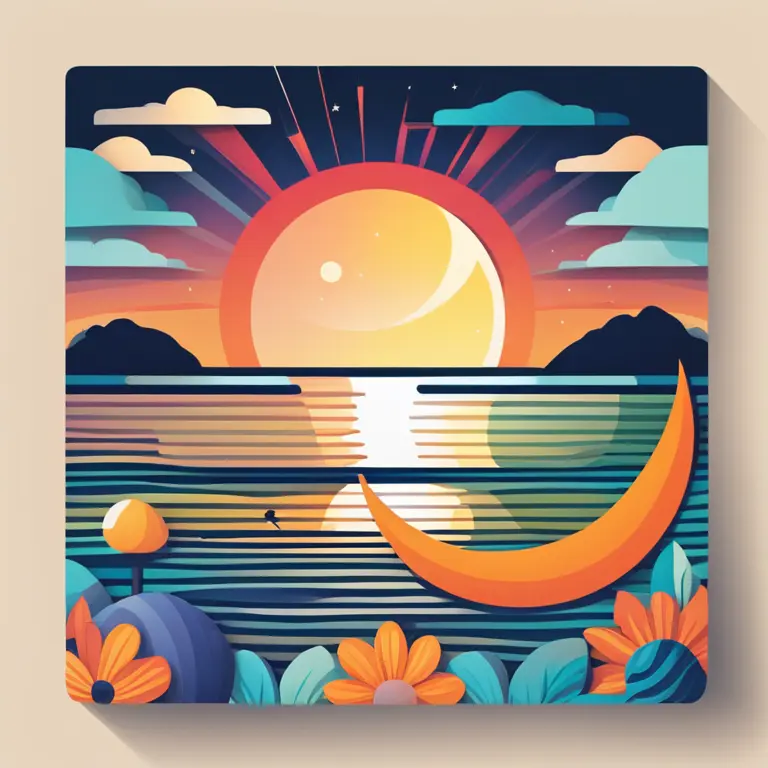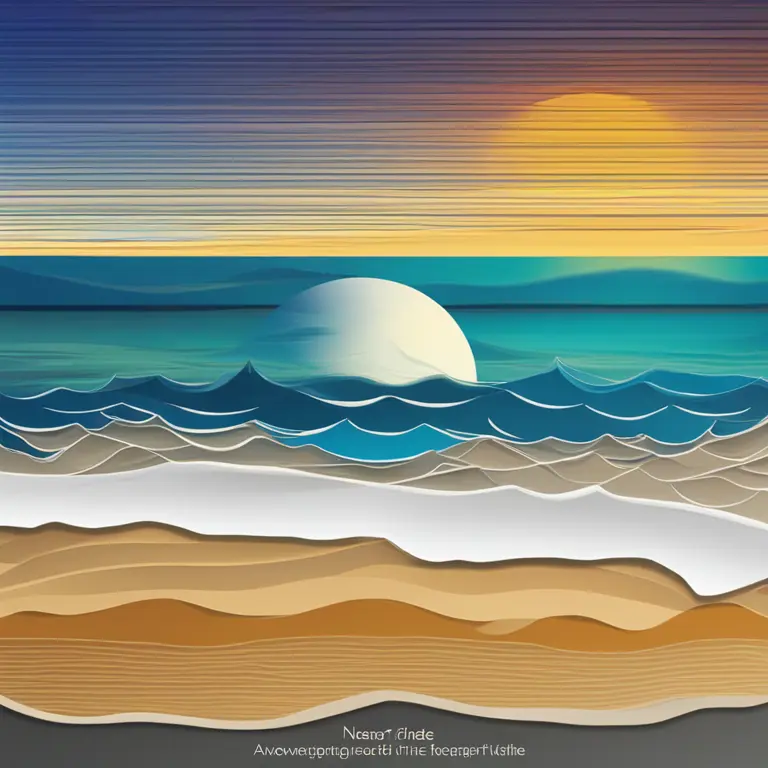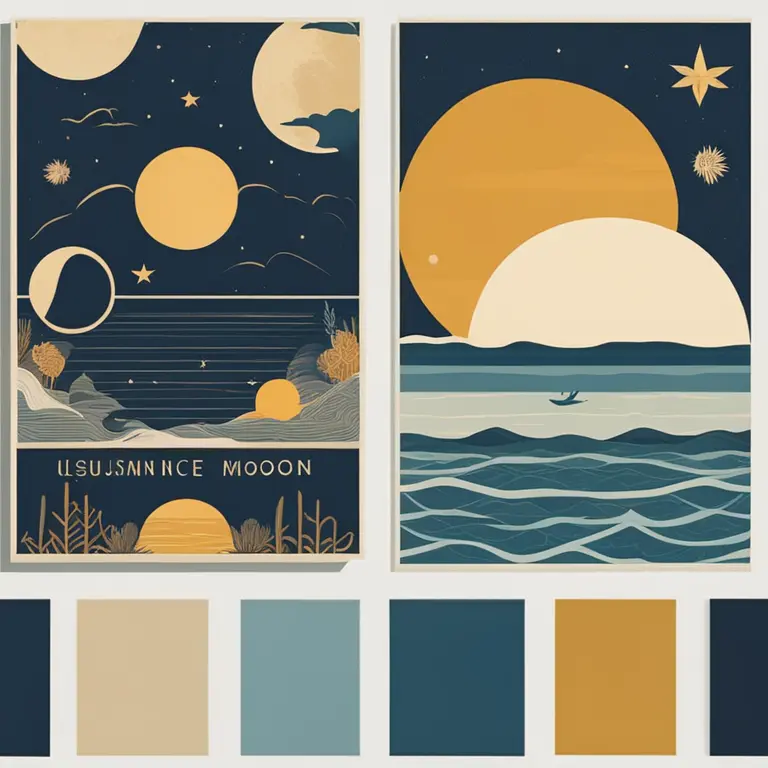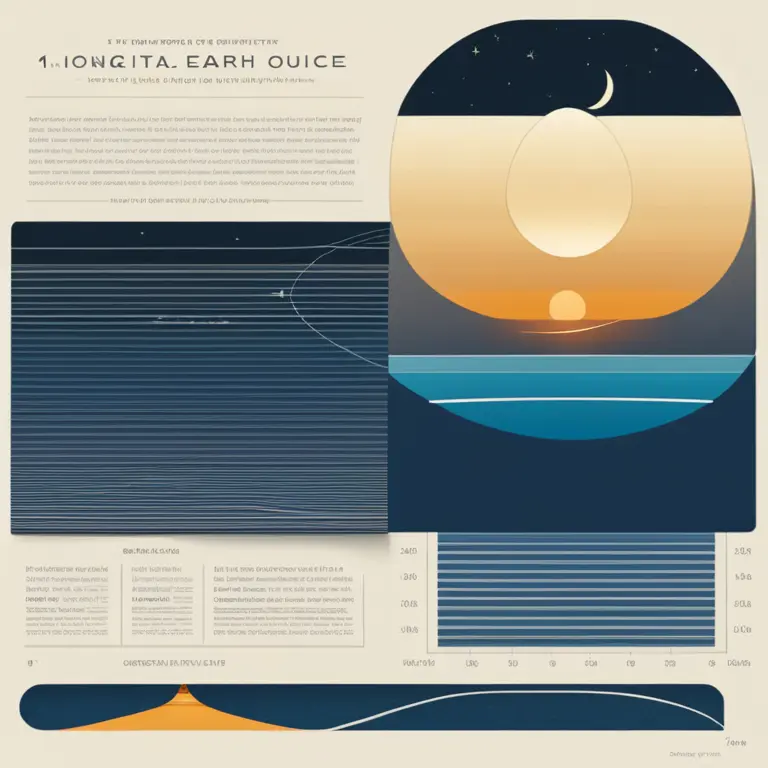
Moon Phases and Ocean Tides: The Celestial Dance
Discover how the lunar cycle influences the ocean's tides, with a special focus on the phases of the moon that lead to high tides.
article by Priya Deshmukh
The Moon's Gravitational Pull
The Moon's gravitational force is a powerful agent in the ebb and flow of Earth's oceans. As our celestial companion orbits Earth, its gravitational pull generates what we know as tides—a rise and fall of sea levels. The moon is at the heart of this natural phenomenon, exerting a tug that affects the water on our planet's surface, creating bulges that move around Earth as the moon travels through its orbit. These bulges are responsible for the rhythmic pattern of high and low tides. Let's look at how different moon phases impact the magnitude of tides.

Spring Tides: Full Moon and New Moon
High tides reach their peak during the full moon and new moon phases—this is no astrological myth but a scientific fact. When the sun, Earth, and moon align, which occurs during the full moon (when the moon's illuminated side is fully visible) and the new moon (when the moon is between Earth and the sun), the combined gravitational forces of the sun and the moon create exceptionally high and low tides known as spring tides. Despite the name, spring tides have nothing to do with the season and occur roughly twice each lunar month, regardless of the time of year.

Neap Tides: First and Last Quarters
When the moon is at its first or last quarter phase (when we see half of the moon's illuminated side), we experience neap tides. During these phases, the sun and moon are at right angles to each other relative to Earth, which causes their gravitational forces to cancel each other out partially. As a result, the difference between high and low tides is less pronounced, leading to more moderate tides. Neap tides may be less dramatic than spring tides, but they play a crucial role in the coastal and marine ecosystem's balance.

Lunar Influences on Daily Life
Astrology enthusiasts look to the stars and planets for insight into daily life, and in the case of the moon and tides, there's a tangible connection. The phases of the moon have historically guided farmers, fishermen, and maritime navigators. In modern times, understanding tidal patterns is essential for coastal planning, shipping, and recreational activities. For those who follow astrological trends, the full moon in 2024 will be a time to stay aware of stronger currents and energies, both in the sea and in individual lives.

Future Tidal Predictions
Predicting tides is a sophisticated practice that now combines astronomical observations with complex computer models. Scientists can project future tidal patterns with incredible precision, taking into account not only the moon's phases but its distance from Earth, as the moon's orbit isn't a perfect circle. This affects the intensity of tidal forces. In 2024 and beyond, such predictions will continue to assist in various fields—from ecological preservation efforts to the next beach vacation planning.
The Cosmic Rhythm and You
For those who resonate with celestial cycles, understanding the phases of the moon can offer more than just scientific knowledge—it can also provide a spiritual framework for life's rhythm. Palmistry, astrology, and other esoteric practices often incorporate lunar cycles into their methodologies. Whether you plan your activities around the full moon's heightened energy or use the new moon for setting intentions, recognizing the moon's influence on tides can deepen your connection to the natural world and its astrological significance.
Published: 1/19/2024
Modified: 1/19/2024
More predictions
Come back here soon to learn more about yourself and your future


Moon Phases: How They Impact On Sleep
Discover how the different phases of the moon may influence your sleep patterns and overall nocturnal well-being.


The Precision of Moon Phase Watches: A Detailed Review
Delve into the world of astronomical timepieces as we discuss the accuracy of moon phase watches and their place in the realms of timekeeping and astrology.


The Reality of Moon Phase Soulmates
Delve into the mystical concept of moon phase soulmates and discover if there's truth behind the celestial connection.